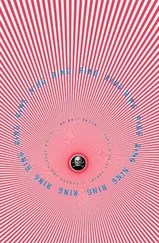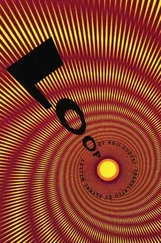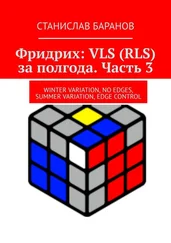Koji Suzuki - Edge
Здесь есть возможность читать онлайн «Koji Suzuki - Edge» весь текст электронной книги совершенно бесплатно (целиком полную версию без сокращений). В некоторых случаях можно слушать аудио, скачать через торрент в формате fb2 и присутствует краткое содержание. Город: New York, Год выпуска: 2012, ISBN: 2012, Издательство: Vertical, Жанр: Ужасы и Мистика, на английском языке. Описание произведения, (предисловие) а так же отзывы посетителей доступны на портале библиотеки ЛибКат.
- Название:Edge
- Автор:
- Издательство:Vertical
- Жанр:
- Год:2012
- Город:New York
- ISBN:978-1-935654-95-7
- Рейтинг книги:4 / 5. Голосов: 1
-
Избранное:Добавить в избранное
- Отзывы:
-
Ваша оценка:
- 80
- 1
- 2
- 3
- 4
- 5
Edge: краткое содержание, описание и аннотация
Предлагаем к чтению аннотацию, описание, краткое содержание или предисловие (зависит от того, что написал сам автор книги «Edge»). Если вы не нашли необходимую информацию о книге — напишите в комментариях, мы постараемся отыскать её.
Edge — читать онлайн бесплатно полную книгу (весь текст) целиком
Ниже представлен текст книги, разбитый по страницам. Система сохранения места последней прочитанной страницы, позволяет с удобством читать онлайн бесплатно книгу «Edge», без необходимости каждый раз заново искать на чём Вы остановились. Поставьте закладку, и сможете в любой момент перейти на страницу, на которой закончили чтение.
Интервал:
Закладка:
She floated alone, an isolated body in empty space. She glanced at her wristwatch and confirmed that the dials had stopped moving though it had been functioning until a moment ago. Her mind confirmed what she already suspected; somehow, without even realizing it, she had entered the mouth of the wormhole.
The congregated light was now a circle about the size of a coin. Saeko watched as it began to transform into a slender cylinder that stretched towards her, closer and closer. As it approached, its diameter expanded, flexing and relaxing in warped space. Connecting her to the luminosity, an arch of strings released particles of light. Saeko could only stare at the beautiful sight. The glowing cylindrical band was lined with blue and purple twinkles amidst a misty shower of tinier particles. It was a rainbow of light spanning the darkness, but its sacred glow didn’t seem to light up the surroundings. The rainbow continued towards her, and Saeko wasn’t sure if she was moving at the speed of light or if the rainbow was heading towards her at that speed. Its tip opened like the mouth of an enormous snake and slowly swallowed her. A sure feeling of repose of a connection to something greater than herself flooded her.
Everything went black. Saeko found herself inside a thin skin as the border of the world around her began to take on a curved appearance. The inside was dark, but there was a hint of light coming from the outside. She realized that she was in a sphere of some sort.
Something sharp cut into the skin and sliced a fissure nearly as long as herself. A subterranean creature might witness a similar sight if it peered through a crack in the ground. Through this edge she glimpsed a world alien to the one she’d known.
She tried to take a step into the new world but was unable to move. She hugged her knees to her chest, curved like a grub. She tried to call out in joy but no sound formed on her lips. Her face was covered with a thick and sticky mucus.
The sundering of symmetry that popped out of the timeless, spaceless struggle between nothingness and being 14 billion years ago immediately expanded and gave birth to the universe.
After a period of rapid expansion, the pace slowed down. During the cooling process, particles combined to form protons and neutrons, which in turn assembled into elements such as hydrogen and helium.
All the time, the universe continued expanding and cooling. Three hundred thousand years in, electrons began to be drawn in by the nuclei of atoms, clearing the path for the progression of light. Until then, hampered by their bustling activity, light had been unable to travel straight, but now it flooded through the universe, dispelling the clouded darkness.
A further 2 billion years later galaxies and stars began to take shape. It was not for a further 8 billion years that the cradle of our existence — our solar system — was formed at last. Here, gravity exerted its force on cooled gases, bringing about a nuclear fusion reaction that transformed hydrogen atoms into helium, and the brilliance of our sun was born. Following the Sun came the creation of the planets such as Mercury, Venus, Earth, Mars and Jupiter.
The original Earth was only one-tenth of the size it is today. It grew through colliding with micro-planets and began to store heat in its interior, eventually creating an atmosphere and baking oceans of magma. Over time, the atmosphere began to cool, forming the Earth’s crust and plentiful oceans of water. The oceans of magma hardened where deepest, forming the Earth’s core.
The development of the Earth’s atmosphere, the appearance of vast oceans, and the hardening of the crust all came together to pave the way, over the course of 500 million years, for the development of life.
The genesis of life was an almost miraculous convergence of various factors, foremost amongst them a system of cycling energy. Without the balance of absorbing it from the Sun in the form of light and then releasing it back into space, life probably would not have been born in defiance of entropy.
Life is the name of all things that have shells separating them from the outside, the ability to sustain and reproduce themselves, and the capacity to evolve.
It took a long time for the first prokaryotic organisms to evolve into eukaryotic life, but the Cambrian Explosion resulted in the sudden appearance of hugely diverse forms of life. Creatures of all forms emerged from the sea, took to the skies, and wandered the four corners of the earth.
After the reign of the dinosaurs, it was the era of mammals. Gestating in the uterus allowed the fetus to grow within the amniotic fluid, providing a crucial chance for greater development of the brain. They traced a path through many levels of evolution, from primates to anthropods, near-man, primitive man, archaic humans, and eventually modern man. Eventually, this led to the development of language, a system enabling modern man to describe his world.
It was 100,000 years ago when they first journeyed across the narrow passageway of the Sinai Peninsula, leaving its heretofore home of Africa for a wider world. The ones that made their way into Europe roughly 35,000 years ago are called Cro-Magnon man. Caucasoid branched off from Negroid, and those that traveled north of India became Mongoloid. Some of these would cross the Bering Strait and eventually arrive at the southern tip of America.
From then on, the history of humankind was recorded in various languages.
Yet, the 4.5 billion years of history from the birth of the solar system to the birth of mankind has also been recorded — by the light of the Sun. Even now, 4.5 billion light-years away, the light from our sun carries the images of giant molecular clouds beginning to contract together. Four billion light-years away are images of the development of the first life forms, the primordial soup of the Earth’s oceans. And a mere 43 light-years away are images of a craft, piloted by humans, landing on the Moon for the first time.
It was the first time mankind had seen their home planet in all its magnificent splendor. Blue overall with streaks of white, the view of the whole was quite stately, fresh, and elegant, all the more so due to the vast, mystical darkness that was nothing like the night sky seen from the planet itself. Viewed directly the Sun was vile, but in Earth’s shadow, it asserted its presence by turning the latter’s atmosphere a shimmering orange.
The Milky Way: a galaxy at the edge of an infinite universe. The solar system: a star and a collection of planets located far from the center of that galaxy. And the third planet from the Sun: Earth and the life that emerged upon it, some evolving, some perishing, but always thriving as a whole.
Twenty-two minutes and thirteen seconds past midnight on December 26, 2012, immediately after Saeko, Hashiba, and several hundred others were transported to another world, all of this ceased to exist — just one universe among infinitely many, and yet our one and only.
Epilogue
Even after the scalpel cut through the uterus, letting fresh air in, the baby was unable to see the space around it. Its eyes were closed. The baby did not cry. The doctor in charge was unable to determine whether the baby was alive or dead.
The doctor picked it up, removing it from its mother’s uterus; he first inspected the baby’s skull for any abnormalities. After confirming that the skull was intact, the doctor continued to inspect the baby’s palate, its arms and legs, its hip joints for any problems. The baby was a girl.
Even with her eyelids still closed, the baby’s retina would be able to pick up the strong light of the five halogen bulbs set above the operating table. The five circular lights shone brightly down, casting no shadows on the baby or the mother. The baby had emerged from the small, ball-shaped world of her mother’s uterus and was now undergoing a baptism of light. She was being welcomed to her new world.
Читать дальшеИнтервал:
Закладка:
Похожие книги на «Edge»
Представляем Вашему вниманию похожие книги на «Edge» списком для выбора. Мы отобрали схожую по названию и смыслу литературу в надежде предоставить читателям больше вариантов отыскать новые, интересные, ещё непрочитанные произведения.
Обсуждение, отзывы о книге «Edge» и просто собственные мнения читателей. Оставьте ваши комментарии, напишите, что Вы думаете о произведении, его смысле или главных героях. Укажите что конкретно понравилось, а что нет, и почему Вы так считаете.












